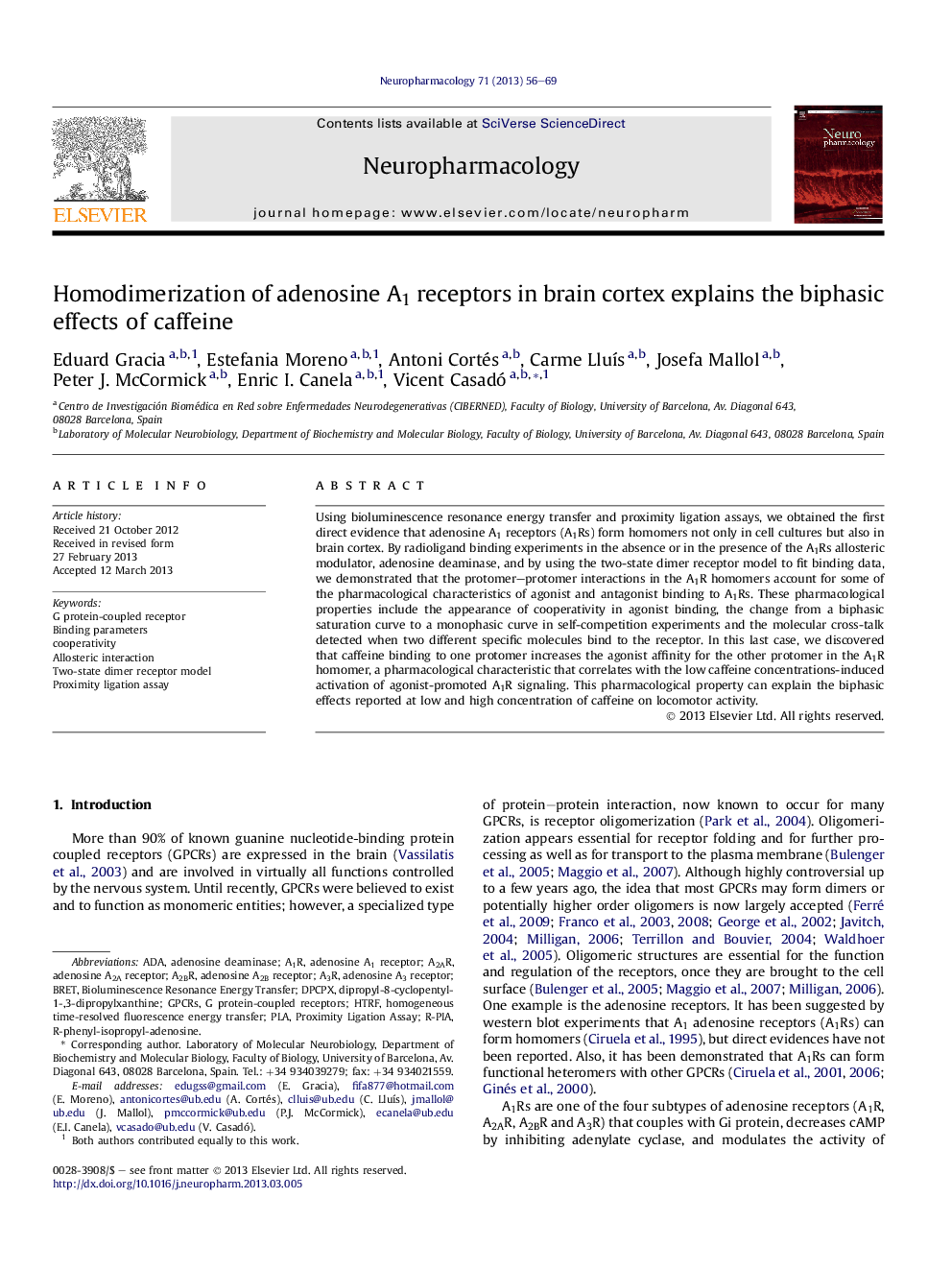| Article ID | Journal | Published Year | Pages | File Type |
|---|---|---|---|---|
| 2493413 | Neuropharmacology | 2013 | 14 Pages |
•A1Rs form homomers not only in cell cultures but also in brain cortex.•A1R homomers explain the appearance of cooperativity in the agonist binding.•Homomers explain molecular cross-talk in the binding of two different ligands.•Caffeine binding to one protomer increases agonist affinity for the other protomer.•This can explain the biphasic effects of caffeine on locomotor activity.
Using bioluminescence resonance energy transfer and proximity ligation assays, we obtained the first direct evidence that adenosine A1 receptors (A1Rs) form homomers not only in cell cultures but also in brain cortex. By radioligand binding experiments in the absence or in the presence of the A1Rs allosteric modulator, adenosine deaminase, and by using the two-state dimer receptor model to fit binding data, we demonstrated that the protomer–protomer interactions in the A1R homomers account for some of the pharmacological characteristics of agonist and antagonist binding to A1Rs. These pharmacological properties include the appearance of cooperativity in agonist binding, the change from a biphasic saturation curve to a monophasic curve in self-competition experiments and the molecular cross-talk detected when two different specific molecules bind to the receptor. In this last case, we discovered that caffeine binding to one protomer increases the agonist affinity for the other protomer in the A1R homomer, a pharmacological characteristic that correlates with the low caffeine concentrations-induced activation of agonist-promoted A1R signaling. This pharmacological property can explain the biphasic effects reported at low and high concentration of caffeine on locomotor activity.
Graphical abstractFigure optionsDownload full-size imageDownload as PowerPoint slide
